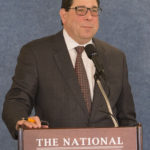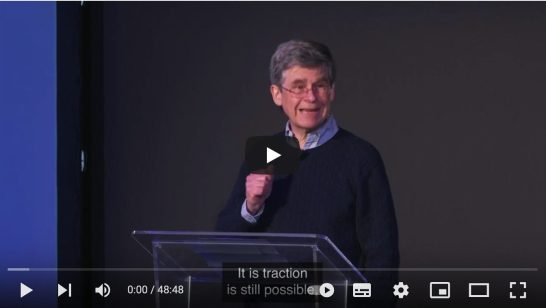
The March Nuclear Security Summit (NSS) in The Hague is the beginning of the end of a unique summit process initiated by U.S. President Barak Obama in 2010. The likely end of this series will be at the 2016 summit in the U.S. In order to leave a lasting legacy worthy of the costs, and involvement of over 50 world leaders, the final two summits must act decisively to eliminate the weak links that exist and persist in the current nuclear security system.
The challenges posed by the current nuclear control system are clear. The architecture is a patchwork of voluntary recommendations and a few binding agreements; countries are free to accept or reject any of these at will. There are no standards for security performance, no regularized and objective assessment of security effectiveness on a global basis, and no requirement that nations take any steps to build international confidence in their security system by providing non-sensitive information on their planning and practices.
This is a very different system from nuclear safety where regular reporting and peer review are mandatory under the nuclear safety convention and is widely considered to be both important and the price of doing business for nations with nuclear power. As the Fukushima Daiichi accident has illustrated, even a rigorous safety regime is imperfect and cannot prevent catastrophic accidents if governments and nuclear operators do not exercise high levels of responsibility.
In order to strengthen the nuclear security system and promote greater international responsibility, five actions should be endorsed by the Hague summit. Some can be implemented through action at the meeting and others can be prepared for implementation at the 2016 gathering.
First, is the need to universalize the current nuclear security regime. This means that all nations should fully and effectively implement all of the existing elements – binding and advisory. This can serve to fill gaps in today’s uneven security system.
Second, nations must be willing to increase the sharing of non-sensitive security information as a contribution to building higher levels of international confidence in global nuclear security. The details of the specific threat spectrum to be defended against and how precisely that is done is not information that can or should be openly shared. But, whether a nation is fully implementing the International Atomic Energy Agency’s nuclear security recommendations, participating in a peer review process with the Agency, has a comprehensive threat analysis, and employs an oversight system are examples of non-sensitive information that can and should be made available.
In addition, nations at the summit and beyond should take voluntary actions to improve their nuclear security. This approach can avoid the need for unpopular new mandates in the near term and ultimately lead to new norms of international behavior. This is important because these actions and norms can lead to a common set of global security standards, which is a vital objective.
Also, better use needs to be made of peer review and best security practices that are tailored to the needs and culture of individual nations. The IAEA offers a peer review process, but its results are confidential unless a country agrees to release the information, as the Netherlands has done. But that is a very different peer review system than the multilateral approach under the safety regime. Best practices are being disseminated but they are not one size fits all.
Finally, there must be endorsement of a legally binding framework convention on nuclear security that will complement the current regime but result in a harmonized, strengthened, adaptable, and sustainable system that outlasts the summit process. This convention is not just a way to eliminate gaps in the current regime and standardize security requirements, it also is an important mechanism that can keep a high level political track on nuclear security vibrant and provide for a process of continuous improvement over time. Devolving the nuclear security agenda back to a primarily technocratic level will knock it well down on the global security priority list and will undercut one of the key rationales of the NSS process – to raise its international profile.
Taking these five steps will demonstrate that countries understand that nuclear security and the prevention of nuclear terrorism, while a national responsibility, is also an important international security obligation. Radiation from a terrorist attack or sabotage will not respect borders and will affect the global economy and social order.
There is an expectation that The Hague summit will take steps toward several of these five recommended actions through an initiative of the three NSS host nations, The Netherlands, South Korea, and the United States. But how many countries sign up to this initiative is important as it will demonstrate both leadership and a commitment to eliminate weak links in the security regime.
With just two summits on the horizon, there is growing urgency and pressure to take aggressive action that will result in a lasting legacy of significant and durable nuclear security improvements from the NSS process. The Hague, as the capital of international law, is the right place to begin this process.
The opinions articulated above represent the views of the author(s), and do not necessarily reflect the position of the European Leadership Network or any of its members. The ELN’s aim is to encourage debates that will help develop Europe’s capacity to address the pressing foreign, defence, and security challenges of our time.


